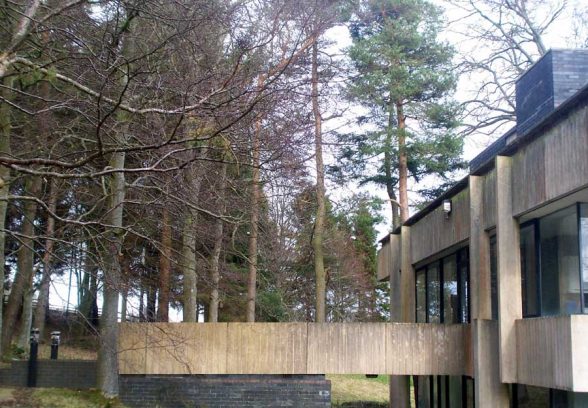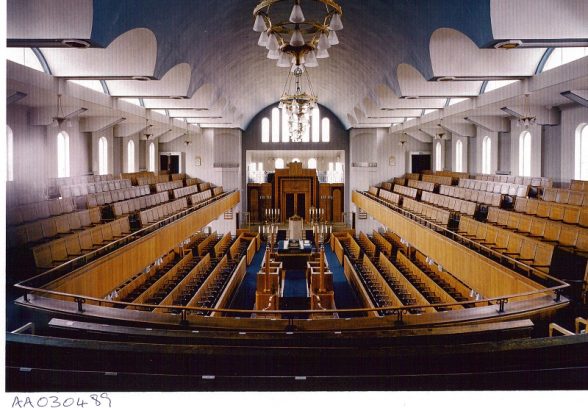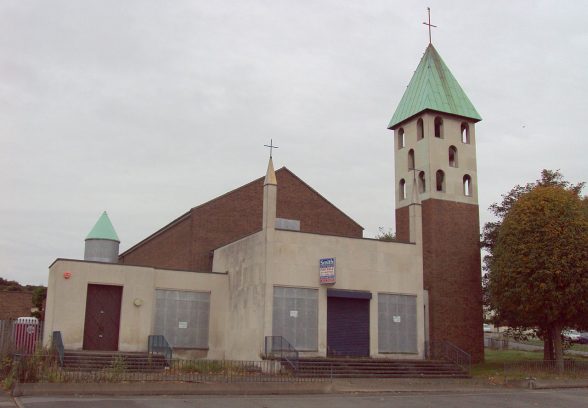This website uses cookies
This website uses cookies to enable it to function properly and to analyse how the website is used. Please click 'Close' to accept and continue using the website.






These ten outstanding buildings are all currently at risk. C20 Society has identified them to highlight the imminent and ongoing loss of inspiring C20th architecture. All ten, and many more, could be gone within 5 years.
Even the best examples of Britain’s recent architecture are increasingly threatened by the demands of a growing population and the relaxation of planning rules. Fabulous buildings which should form our future heritage are neglected and demolished without the debate and consideration given to those of earlier centuries. Public service, local authorities and institutions are under pressure to sell off their buildings for short term gain. Falling congregations in places of worship for both Christian and other faith communities leave religious buildings vulnerable. It is a particular irony that Sainsbury’s Eco-Store is at risk: built as a model of sustainability to celebrate the new millennium, the site is scheduled to be razed and redeveloped.
We do not need to demolish great architecture to allow room for innovation and economic growth. These are buildings which should enrich our lives and those of future generations.
1) Hyde Park Barracks, Knightsbridge, London. Sir Basil Spence (1970). Unlisted
The most prominent feature of the Hyde Park Barracks is the 33 storey tower, which literally towers above Hyde Park. Uncompromisingly modern, the tower nevertheless is slender, well-proportioned unit and creates great drama. Hyde Park Barracks is the base for the Household Cavalry Mounted Regiment, which carries out mounted ceremonial duties on State and Royal occasions in London. Press reports suggest that the Ministry of Defence is planning to move the Household Cavalry from their base so that the Knightsbridge site can be sold off for a highly lucrative profit.
2) Robin Hood Gardens, Robin Hood Lane, Poplar, Tower Hamlets, London. Alison and Peter Smithson (1966-72). Unlisted; Certificate of Immunity from Listing applied for (which The Twentieth Century Society is objecting to).
This iconic social housing development comprises two perimeter blocks (of six and nine storeys) with an irregular open landscaped space between them. The inward looking blocks are constructed of pre-cast concrete panels and projecting fins stitched into in situ concrete floors, creating a rhythmic repetition of elements. This important and innovative design also incorporates continuous horizontal decks running the full length of each block —the ‘streets in the sky’ advocated by the Smithsons. Tower Hamlets has granted approval to demolish the complex; a previous certificate of immunity from listing has expired but a further certificate is being sought.
3) Liverpool New Hebrew Congregation Synagogue, Greenbank Drive, Liverpool, Merseyside. Sir Ernest Alfred Shennan (1936-7). Listed Grade II*
Inspired by Swedish architecture and with Art Deco elements, this truly original synagogue incorporated a cantilevered gallery wrapped around three sides and a spectacular and innovatory concrete barrel vaulted ceiling with intersecting concrete arches. Viewed by The Twentieth Century Society as the finest surviving synagogue in Europe dating from the inter war period, the building has deteriorated due to neglect and is under threat from a proposal to convert it to flats, with significant loss of original fabric and furnishings.
4) Bernat Klein Studio, Scottish Borders, Scotland. Peter Womersley (1972). Listed Grade A.
Peter Womersley designed this building for textile designer Bernat Klein, to be used as space for the reception of clients and designing, weaving and displaying fabric samples. Described as ‘an almost sculptural composition of concrete, steel and glass set on a black brick plinth’, it is regarded as among the most influential buildings in Scotland of its era. It has been derelict since 2003.
5) Church of the Holy Cross, Hoylake Road, Bidston, Birkenhead, Merseyside. F X Velarde (1957-59). Listed Grade II.
The listing description notes that Holy Cross, the last church by Velarde built in his lifetime, shows ‘a distillation of Romanesque and modern motifs that is unique in his work’. Constructed of brown brick and ashlar, the exterior has a ‘jolly geometrical tower’ with five round headed openings on each face and a copper pyramidal roof, while the interior is decorated with polished marble, white mosaic tiling and a wooden coffered and gilded roof. The church has been closed for a number of years and is at risk of deterioration.
6) Hove Town Hall, Church Road/Norton Road, Hove, Sussex. John Wells-Thorpe (1970-73). Unlisted.
Hove Town Hall is an extremely well preserved example of a late brutalist civic building, constructed of glass and concrete. This complex building, with a modulated bronze glass façade, is marked out by a monumental concrete entrance structure defined by four giant hexagonal shuttered columns and two cantilevered canopies. The interior is also a remarkable example of an early 1970s interior, with materials chosen specifically to harmonise with the exterior use of glass and concrete. A proposal has been submitted which seeks to re-glaze the building with green double-glazed units and add an extension to the front entrance, which would irreparably damage the internal and external coherence of the building.
7) Salvation Army Hostel, City Road, Newcastle. Ryder & Yates (1974). Unlisted (listing applied for).
This Mens’ Social Services Centre, originally to house 184 men, incorporates dormitories and small rooms, day rooms, restaurant, facilities for old people and a small hospital. Constructed of blue brindle brickwork, with narrow strip windows carefully organised to allow for maximum flexibility of the plan, it is accessed by two curved ramps under a boomerang shaped canopy redolent of Lubetkin’s Highpoint Two. The Salvation Army recently lost a bid to take over Homeless Services in Newcastle and as a result have announced that they have vacated the building. The building is under threat from potential redevelopment or unsympathetic alteration.
8) Civic Offices, Chester le Street , County Durham. Neil Taylor of Faulkner Brown (1981-2). Unlisted.
This multiple award -winning post-modernist civic centre represents an important milestone in design for civic offices of the late Post-war era. The dramatic silver and glass form with central curved atrium presented a futuristic image for a forward looking council, while the functional internal arrangement was specifically developed to encourage interaction between the public and the council and facilitate ease of contact. Having become surplus to requirements, the Civic Centre is at risk of demolition; the site is identified in the Council’s site allocation plan as a “preferred housing site” for redevelopment.
9) St Peter’s Seminary, Cardross, Scotland. Gillespie, Kidd and Coia (1959-67). Listed Category A.
Widely regarded as the finest modern building in Scotland, St Peter’s Seminary was commissioned by the Archbishop of Glasgow in 1958 and completed in 1966 but closed just 14 years later. The main seminary block includes the church and sanctuary, while in a separate block a honeycomb of vaulted student cells sits above the refectory; a teaching block of rhomboid plan incorporates a library and lecture theatres. Constructed of in situ and pre-cast concrete panels, the building has echoes of Le Corbusier’s La Tourette monastery and World War II Atlantic Wall bunkers. The complex is in an almost ruinous state; despite a number of proposals for reuse or renovation of the building, its future remains insecure.
10) Sainsbury’s Greenwich, LB Greenwich, London. Chetwood Associates (1999). Unlisted; certificate of immunity from listing granted.
Sainsbury’s unique eco-millennium store represented a complete re-think of traditional supermarket design, with every aspect of the standard retail ‘shed’ re-assessed to maximise energy efficiency, minimise environmental impact and improve customer experience. It now looks set to be lost; planning consent has been granted for the building to be demolished and replaced by an IKEA ‘shed’ of the type the building so successfully challenged.

Become a C20 member today and help save our modern design heritage.